We Are An Island People: When Will New York City Truly Embrace Water Transit?
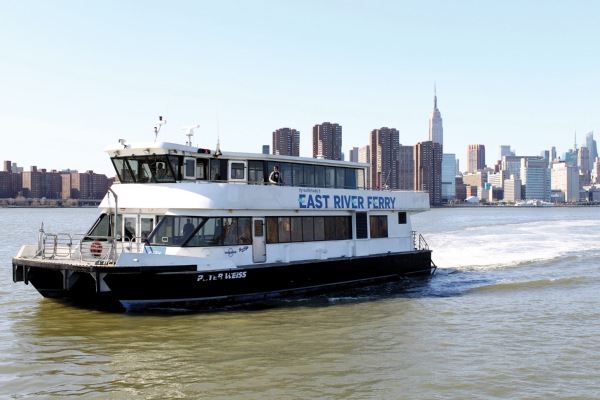
NEW YORK — Nearly six months after Superstorm Sandy paralyzed subways and buses across the city, water transit advocates and politicians are saying it is time to expand ferry service into a robust, five-borough system that can operate in good times and after disasters.
They also see it as a means for providing affordable public transit to areas underserved by existing transit infrastructure — including, for example, the Rockaways, where the subway linking the peninsula was taken out of commission by the storm and a new ferry service was started up to connect the isolated community to Manhattan.
Yet, as policymakers look to expand ferry service, they are reminded of similar efforts over the past 20 years that have drowned in costs. Around 30 regional ferry services have come and gone, despite the investment of close to $700 million in capital investments.
Today's ferry system is balkanized, with about half a dozen private operators carrying passengers across the Hudson and East rivers, as well as other parts of the metro area. The Staten Island Ferry, which accounts for the largest share of waterway ridership, is run by the Department of Transportation.
Nevertheless, the city has the highest ferry ridership of any city or metro area in the nation, with around 30 million passengers using the "blue highways" — as they are sometimes called — to get around. Still, those ridership numbers pale in comparison to the 1.65 billion people who take subway trains each year.
Significant hurdles remain-primarily adequate public funding-especially in a city that is highly dependent on an already cash-starved mass transept system. But ferry supporters say what's needed is a collective change in transit psychology regarding the opportunities on the blue highways. They and their political supporters say ferry service should be fully integrated into the existing transit system, with riders being able to transfer from a bus to a boat with the same fare card- freely.
Officials at the Metropolitan Transportation Authority, which runs the buses and subways, say they' d be open to a technological fix that would integrate fare payment options between ferry operators and the larger transit system.
"If any of the region's ferry operators would like to approach the MTA about using MetroCard for their fare payment — the same set up with other land base providers — we'd be delighted to talk and evaluate moving forward," MTA spokesman Aaron Donovan said.
INTEGRATING FERRIES INTO THE TRANSIT SYSTEM
For ferry operators, the technology behind integrating the payment operations into the mass transit system is the easy part. The bigger question is who would make up the lost fare revenue for free transfers from the public MTA to the private ferry operators. Would government be willing to provide the additional subsidy? Or could the ferries themselves someday find themselves under the ownership of an expanded MTA?
.
For now, Helena Durst, vice president at the Durst Organization and president at New York Water Taxi, said she'd be willing to talk about a system where riders could transfer for free to a ferry or vice versa onto a bus or train. She said ferry regulations require that her company keep accurate passenger counts that they could provide to the transit agency for payment.
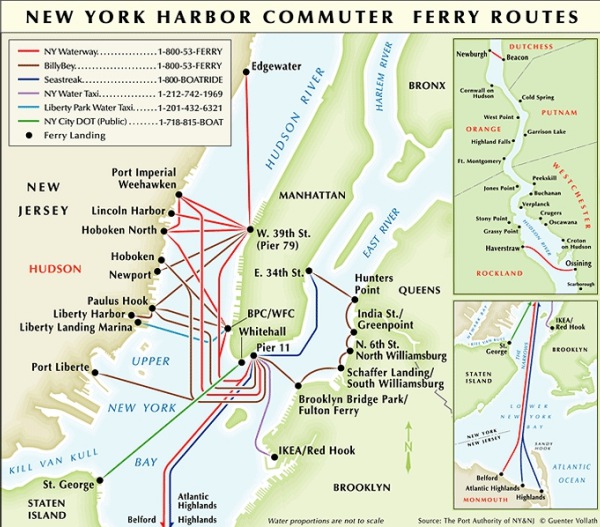
Current ferry service (map courtesy of the Port Authority of New York and New Jersey).
That process could be streamlined in the next few years: The MTA hopes to move over to a to a tap-and-go payment system where the majority of people would use a bank-issued 'smart' credit card or even a phone to pay fares. The system would essentially take the MTA out of the fare collection business.
The city's Economic Development Corp., is also studying the possibility of expanding ferry service.
The agency is helping to pay for East River Ferry service with a three-year, $9 million subsidy, and is in discussions with the MTA to share ridership information and inform bus planning. The MTA has plans to expand bus service near ferry stops on the Brooklyn and Queens waterfront, the EDC said.
Roland Lewis, president and CEO at the Metropolitan Waterfront Alliance, which held its annual conference last week and hosted a panel on the future of the ferry system, said any expansion of ferry service would require subsidies similar to the one being provided for the East River Ferry.
Most mass transit systems receive subsidies. The Long Island Rail Road has a subsidy of around $6 per passenger and the New York City Transit Express bus system's subsidy is roughly $12 per rider.
Lewis calls ferries a bargain. He said the government pours billions of dollars into subway tunnels, roads and bridges, while the city's underutilized waterways offer abundant potential for relieving clogged roads. He says ferries require virtually no capital investment.
But he said there was a greater obstacle to overcome.
"Ultimately, this will be a political question," Lewis said. "If and when political leaders do embrace or make ferry service a priority, then we'll likely see integrated ferry service that's a part of our bigger transit system."
POLITICIANS LOOK TO WATER TRANSIT
Politicians appear to be eyeing ferries as a solution to the problems of climate change and increasing mass transit costs.
New York Gov. Andrew Cuomo's 2100 Commission calls for improvements in ferry service as a means for improving the region's resilience to future extreme storms.
For his part, Sen. Chuck Schumer has been fighting for federal funds to upgrade the Staten Island Ferry’s infrastructure as well as federal funds for the proposed Glen Cove Ferry project, which will create a link between Nassau County and New York City, said a spokeswoman for the senator, Marisa Kaufman.
Earlier this month, Schumer also asked the Federal Highway Administration and the New York State Department for Transportation to prioritize funding for infrastructure that would allow for expansion of the East River Ferry Service, which exceeded ridership expectations during its first 18 months of operations.
New ferry service would include new landings at Pier 6 in Brooklyn Bridge Park, Hallets Point in Astoria and the Upper East Side. Also, the expansion would allow for a Roosevelt Island ferry landing.
That service would likely meet the needs of student commuters to ConellNYC's Applied Science Campus — the new ferry service has already been dubbed the "Nerd Boat" because tech industry professionals would likely use it to travel between Roosevelt Island and Brooklyn and Queens.
At a mayoral forum held at the MWA's annual Waterfront Conference last week, some candidates expressed support for a more robust ferry system.
City Council Speaker Christine Quinn, a frontrunner to be the Democratic mayoral nominee, said she supported having the city partially subsidize the ferry system's integration into mass transit. "It's about the greater good of the city," she said.
At a separate MWA conference panel discussion on New York City ferry service, the city's Department of Transportation's Deputy Commissioner for ferries and chief operating officer of the Staten island Ferry, James DaSimone, told the panel it was essential to take a more visionary approach.
He said that meant promoting a viable ferry system that the city and the whole metropolitan area can expand transit. He said that if ferry transit supporters can promote water travel as a viable way to augment and grow transit in areas where the existing transit infrastructure is mature, the rest will naturally flow into place.
DaSimone also noted the difficulties in finding money to run the systems. He said at the federal level one of the biggest problems he faces as a ferry operator is the abundance of cash for highways and other forms of transit.
In 2011, the Staten Island Ferry received $2.34 million for boat upgrades under the Ferry Discretionary Program, through the Federal Highway Administration.
A GROWING PASSION FOR THE WATERFRONT
Lewis said that he had seen a passion for the coastline in other waterfront cities, that is just now emerging in New York City.
"When I'm in Vancouver, Seattle or Portland, people are very attached to the water," he said, adding that newer waterfront parks along the city's borough shores have started to change the psychology of New Yorkers.
He said ferry service can help to encourage interest in the waterfront and pointed to San Francisco as an example.
In San Francisco, commuters can use what's called the "clipper card," a multi- transit payment card, for all trips. The city has 28 different transit agencies in its nine-county metro region.
But the city has had mixed results with its newer ferry service.
John Goodwin, a spokesman at the Metropolitan Transit Commission in San Francisco, said the city has two ferry operations: the established Golden Gate Bridge highway and transportation district, which operates two lines between San Francisco and Sausalito and San Francisco and Larkspur; and the San Francisco Bay water emergency transportation authority, which operates all the other regular services.
Goodwin said there were also a couple of other private operators as well. He said the public subsidies for the Bay area's ferry routes vary.
He said some of the newer routes that link south San Francisco to the East Bay were struggling to find a market. He said the fare box recovery rate on those new routes was around just 8 percent, meaning that each ride was around 92 percent subsidized.
"A new service takes time to find and grow its market," Goodwin said.
Ferry service has long been part of the mix of transportation available to New Yorkers, going back to 1600s when boats powered by the use of oars were popular.
But by the turn of the 20th Century, bridges and tunnels had rendered much of the ferry service obsolete, with commuters choosing trains, buses or cars to get around.
Image of East River Ferry boat courtesy of New York Waterway.
How Data Is Helping Riders To Make Sense Of Their Transit System
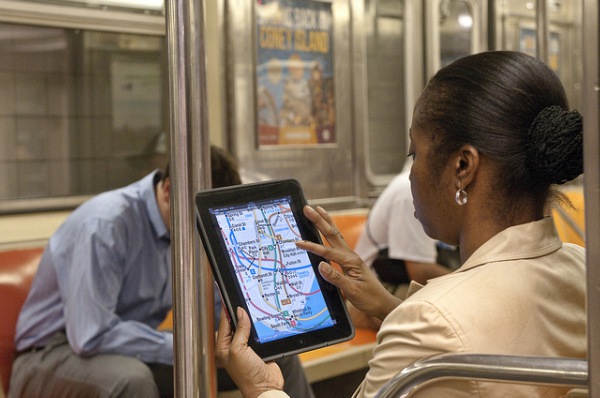
NEW YORK — New Yorkers love to complain about their subway system: It's too slow, too expensive, too dirty. And, worst of all, it's too difficult to understand why.
That part — the why — is gradually being answered as the Metropolitan Transportation Authority embraces and promotes the public dissemination of the massive amounts of data that the agency generates on everything from train delays to its budget.
A group that works to keep the MTA accountable is set to release findings on Tuesday from a long-term study titled "The MTA in the Age of Big Data," which looks at the state of the agency's efforts to make data accessible to the public.
Read about the findings of the report on The Eye-Opener blog.
Such so-called open data is creating new lines of transparency and opportunities for tech savvy entrepreneurs to develop apps for smartphones and tablets. It is also giving at least those citizens with the technical wherewithal a peek into the inner workings of a public agency that has long been criticized for its lack of openness.
"The MTA has emerged as a leader in open data efforts, and while there's certainly still a long way to go, considering the amount of data they are dealing with, they're doing pretty well," said Sarah Kaufman of New York University's Rudin Center for Transportation Policy and Management.
Still, she said the agency has a ways to go before the tremendous amounts of data coming from the nation's biggest public transit system is simplified and fully user friendly.
Some transit advocates also believe the data should be used to create charts and other visualizations to show sources of income and to demand more funding for the public agency, especially given staggering increases in ridership.
"How many times have we been in conversations explaining to people why the MTA raised its fares, how many times have we explained that no transit agency in the country survives off its fares alone?" asked Ellyn Shannon, a transportation planner and staff member of the Permanent Citizens Advisory Committee to the MTA, which is releasing Tuesday's report.
The move by public agencies like the MTA to make available to the public data that was once almost impossible to obtain has been celebrated by open government advocates. In the transportation sector, observers see local agencies such as the MTA on the path to transparency. Still, understanding the nuts and bolts potential of what transparency in transportation means will require real and open collaboration between those releasing the data and those receiving and using it.
Before the virtual curtain was lifted at the vast public agency, software and app developers were at risk of copyright infringement and intellectual theft charges if they created programs with subway system maps or train line schedules. The MTA famously sued one Metro-North commuter who wrote a blog called "Station Stops" and developed an app of the train line's schedules. The matter was resolved in 2009 when the MTA dropped all its charges.
By 2010, the MTA appeared to embrace the mobile revolution with the launch of a redesigned website under the leadership of Jay Walder. In January of that year, the MTA started an open data feed. The fast flowing river of new information was a virtual gold mine for researchers and tech developers who could use all the data for projects they might be working on.
Months later, in what MTA has called a watershed moment, public transit officials held a conference with techies at Google headquarters in New York. There, the agency learned more about the potential ways it's vast troves of data could someday benefit and engage its riders — from tracking real time bus arrivals and train delays to understanding the pipelines where millions of dollars in MTA funding gets used each year.
Jeff Maki, director of operations at the nonprofit civic technology organization OpenPlans, said the MTA began to understand that software developers were better equipped to understand how its data could be used.
"The MTA does its job well. But the third party developer world is better equipped to respond to many of its app and technological needs," Maki said.
By July 2011, the MTA had launched its first app contest and, the following February, the agency had finalized a data feed that allowed passengers to know where and when trains run.
But even after opening its databases to the public, some remained far too complex to fully understand. For example, up until February, MTA budgets weren't keyword searchable.
Cate Contino, the Straphangers Campaign coordinator at NYPIRG, says even the smallest of technological innovations or tweaks to a data pool can mean a lot in helping make vast troves of data easier to navigate. Her organization has lobbied for a more "open" MTA since 1973.
"There are data sets now available at the MTA page that even I don't fully understand," Contino said.
Her group has worked with The New York City Transparency Working Group, which supports efforts to use information technology to make New York City government more open and accountable.
Ultimately, the goal of the transparency efforts are to get the greatest public value from the city's wealth of digital information.
"We've been requesting that the MTA expand its efforts and introduce performance measures and historical data that would allow researchers and academics to take a deeper look at what's been going on inside the MTA," Contino said.
That would allow the public and the agency to come up with solutions such as improving schedules — places where trains need to be cleaned more or other issues.
"We'd love to see a historical archive of capital investment projects and see how they've impacted the service and the overall transit riding community," Contino said.
Shannon said that part of the conversation should be that this is not an all or nothing proposal on open data. She said the MTA website, while a rich source of information, can prove unwieldy.
MTA's Donovan said the agency is looking at digitizing its budgets and making that information more readily available.
"At this time, they don't have a launch date, but they are aware of it, and looking at ways to make that might could happen," he said
For now, Donovan praises the push for a more open MTA and how it has engaged the riding public.
"It helps everyone in the public understand what we do both operationally and, administratively," he said. "Overall, the reaction has been very positive."
Shannon said it's also been exciting to see a new groundswell of interest in MTA affairs among younger New Yorkers. She noted that transit in New York City had for many years taken an adversarial tone.
Referring to one memorable transit advocacy meeting she had attended, she said "it was more a beat-up, not a meet-up."
Shannon and others agree that as more New Yorkers are able to better understand how funding deficiencies impact MTA services, interest will only continue to grow and the public will find itself even more engaged in MTA policy.
Perhaps, even, the public will come to grasp some of the complexities that face leaders who are running an aging railroad under the auspices of a giant public agency.
"Now there's this new group that has such a thirst for all the data, and learning about how the MTA works, and I think in a much more generous spirit than what we saw years ago," Shannon said.
___
Image of subway rider on tablet courtesy of the MTA. Photo of digital clock by Cody Lyon.
Butt Of Jokes G Train Gets Some Serious Attention
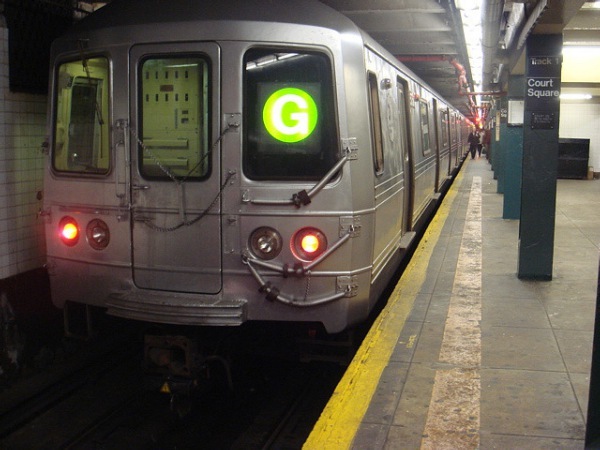
NEW YORK — It was once known as the venerable train to the 1939 New York World's Fair and was a critical transit artery for workers at industrial plants churning out materials for World War II.
Today the G train is the object of jokes and rants each day, both for its small number of cars and its spotty service.
"It's a wild card as far as when I'll get to work or back home," said freelance theater director and Greenpoint resident Josh Hecht, who takes the G train daily and says he leaves home an extra twenty minutes or so early to get to work appointments.
A number of factors are coming together to bring change to the long-neglected G train, which has seen ridership grow because of the popularity of neighborhoods served by the subway line, including fashionable Williamsburg, Greenpoint, Fort Green, Clinton Hill and Bedford-Stuyvesant in Brooklyn.
The Metropolitan Transportation Agency, in response to calls from state lawmakers and a new transit advocacy organization for improvements like increased frequency of trains and communication with riders on the line, has announced that it will do a so-called "full line review" of the line by June. That review could result in major upgrades to one of the city's most neglected lines.
Reviews of the L and F lines have led to improvements in service in recent years.
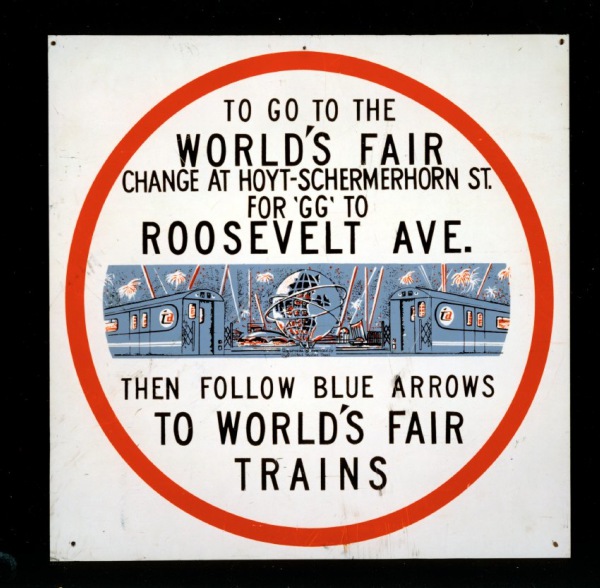
Of course, it remains to be seen whether the MTA can find any room in its already squeezed budget for improvements, especially after Hurricane Sandy caused an estimated $5 billion in damage. A spokesman for the state comptroller's office said it expected the storm to "have a relatively small budget impact" on the MTA.
"We're asking the MTA to partner with riders to make some common-sense improvements to G train service," said John Raskin, CEO at Riders Alliance, a new grassroots organization that seeks increase funding for public transit in New York overall. The group is taking a neighborhood-by-neighborhood approach, with the G train being its current focus.
Raskin said MTA service cuts in 2010 to the entire subway system had focused attention on the G line's inadequacy.
"The MTA doesn't have the resources it needs to fully run the subway system — the G train being just one example of that greater system-wide problem of inadequate funds," Raskin said.
But he says that many of the changes being called for by his group and others for the G involve simple reprogramming of existing services that could come at little cost.
MTA spokesman Aaron Donovan told the Gotham Gazette that the agency "continuously evaluates levels of ridership, including loading levels, boardings and alightings, across all subway and bus lines, and seeks to maximize service availability to as many customers as possible within operational, capacity and financial constraints."
State Sens. Daniel Squadron and Martin Malavé Dilan are among the lawmakers whom support improving service on the line. A Squadron spokeswoman, Amy Spitalnick, says the the full line review would compile thorough information on rider patterns, find out where and when there are service gaps and figure out where service can be filled in at a very cost effective way-even in a day of constrained budgets.
The data that already exists helps create a compelling picture of a subway line that is becoming more in demand as the neighborhoods it serves increase in popularity.
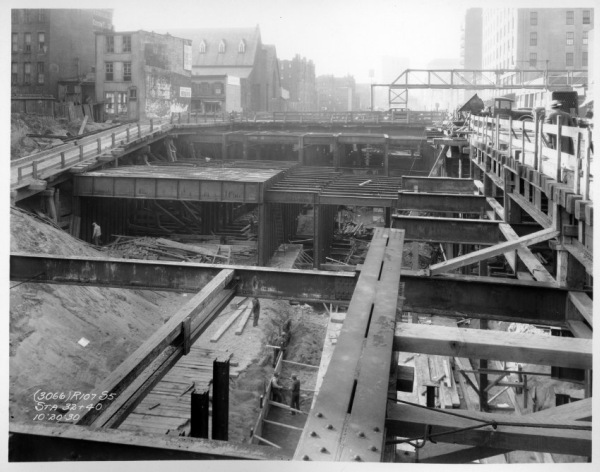
At subway stops served by only the G and no other trains, ridership is up year over year, based on percentage. For example, MTA data shows that ridership spiked by 13.2 percent at Greenpoint Avenue between 2010 and 2011; by 12.7 percent at Nassau; and by 11.3 percent at Flushing Avenue.
Real estate agents also report an increased interest in the neighborhoods served by the G line. According to PropertyShark.com, home prices in Williamsburg shot up 174 percent between 2004 and 2012. In the areas north of Williamsburg, such as Greenpoint, prices were up by as much as 47 percent.
Real estate players consider reliable train service an important factor when making decisions about where to build.
"People forget that it was the subways and elevated train lines of years ago that led to development in places like the Bronx allowing immigrants who before that were crowded into lower east side tenements to move to bigger apartments," said Marcia Rose Yawitz, a 40-year real estate veteran and current senior director and principal at Eastern Consolidated.
Anthony Lolli, CEO of Rapid Realty, one of the city's largest residential brokerages, said that just a few years ago, if a broker told a client that an apartment was off the G train, they groaned.
"While that's still a common attitude, now we have a growing number of renters who specifically want to live along the G. The housing options along that line have become so good," he said.
For most of its history, the G train — originally known as the GG — operated between 71st Ave in Forest Hills Queens and Church Ave., in Brooklyn. Soon after it opened 1937, the line was cut back to Smith and Ninth Street in Brooklyn. It quickly gained fame as the best way for Brooklynites and Queens residents to get to one of the nation's biggest events — the 1939 World's Fair at Flushing Meadows-Corona Park via an extension built from the Forest Hills station (and later closed in 1940). From the 1940s, the GG was a workhorse line for industry-heavy northern Brooklyn.
But then the cuts began, and the GG shrunk. Currently, it runs between Court Square in Queens and Church Avenue in Brooklyn.
"The G train is one of those unsung heroes," said transit historian Andrew Sparberg. "It performs a vital function, but it doesn't do so under the bright lights of Manhattan. But for the people of Brooklyn and Queens who have used it over the years and now use it each day, it's a very important train."
For those who don't know the G, it is the only train option for trips between central Brooklyn and at one time, central Queens and is the only line between the boroughs that doesn't actually go through Manhattan.
Sparberg, who teaches courses on subway history at the New York City Transit Museum, said the G train plays a supporting role to other, more critical lines in the system. "The G's biggest role over the years was that of a strictly local line," said Sparberg.
.
In many ways, the G line is still playing that role.
On the other side of Brooklyn, south where the G extended service to Church Street, one rider sang some of the G's praises.
Mitch Adair, a marketing advertising and brand consultant, says he thinks the G and its reputation as a 'forgotten train' could be remedied with a few tweaks, perhaps those called for by the Riders Alliance and others. But for now, Adair is happy with his ability to keep things on his side of the river and avoid Manhattan when crossing over into Queens.
"I can't tell you how nice it is to live in Brooklyn and get to PS1 in Queens without a trip through Manhattan," he said, referring to the outpost of the Museum of Modern Art that is a hipster haven of sorts. "What a relief!"
____
Image of G train at Court Square courtesy of Bitch Cakes, used under Creative Commons license. Images of G train poster from the 1939 New York World's Fair and from construction of the line courtesy of the New York Transit Museum.




